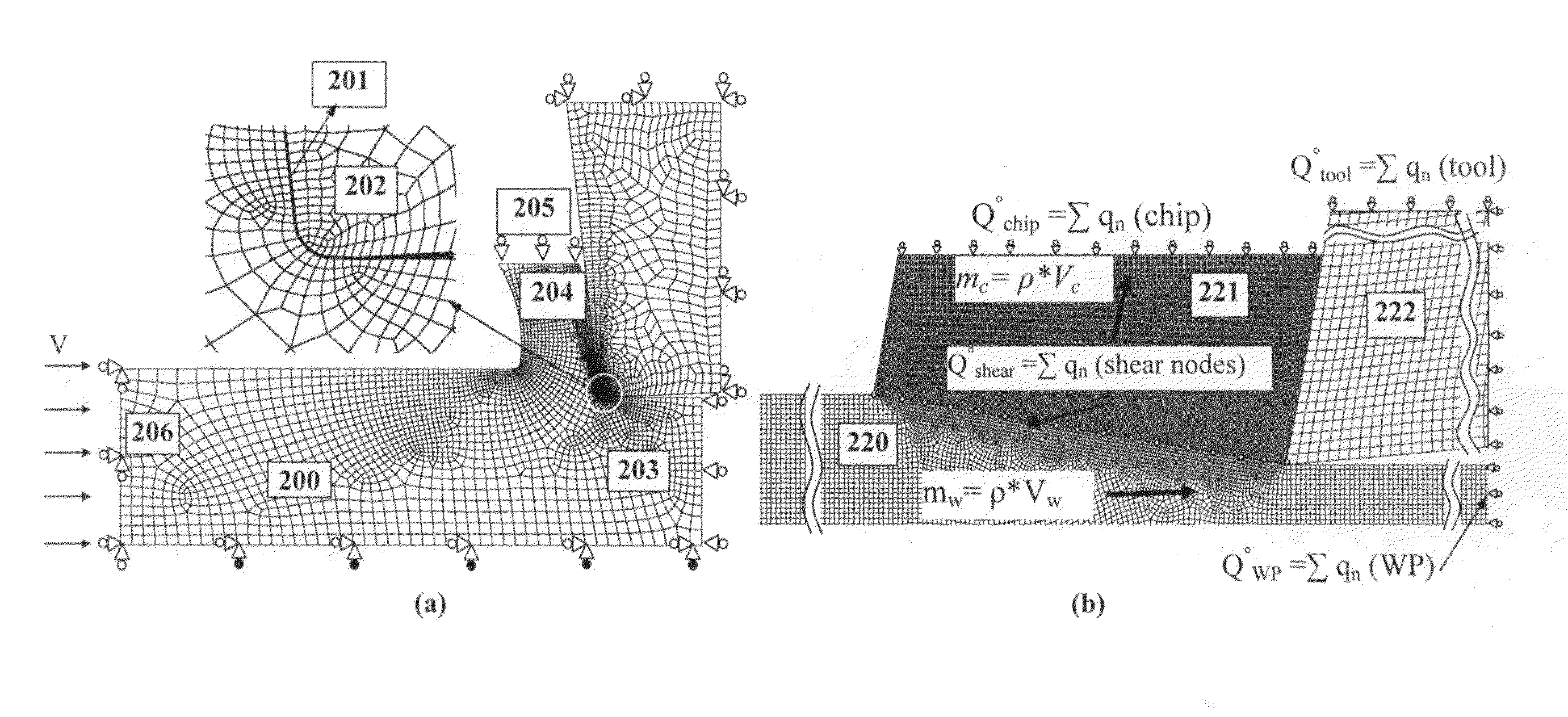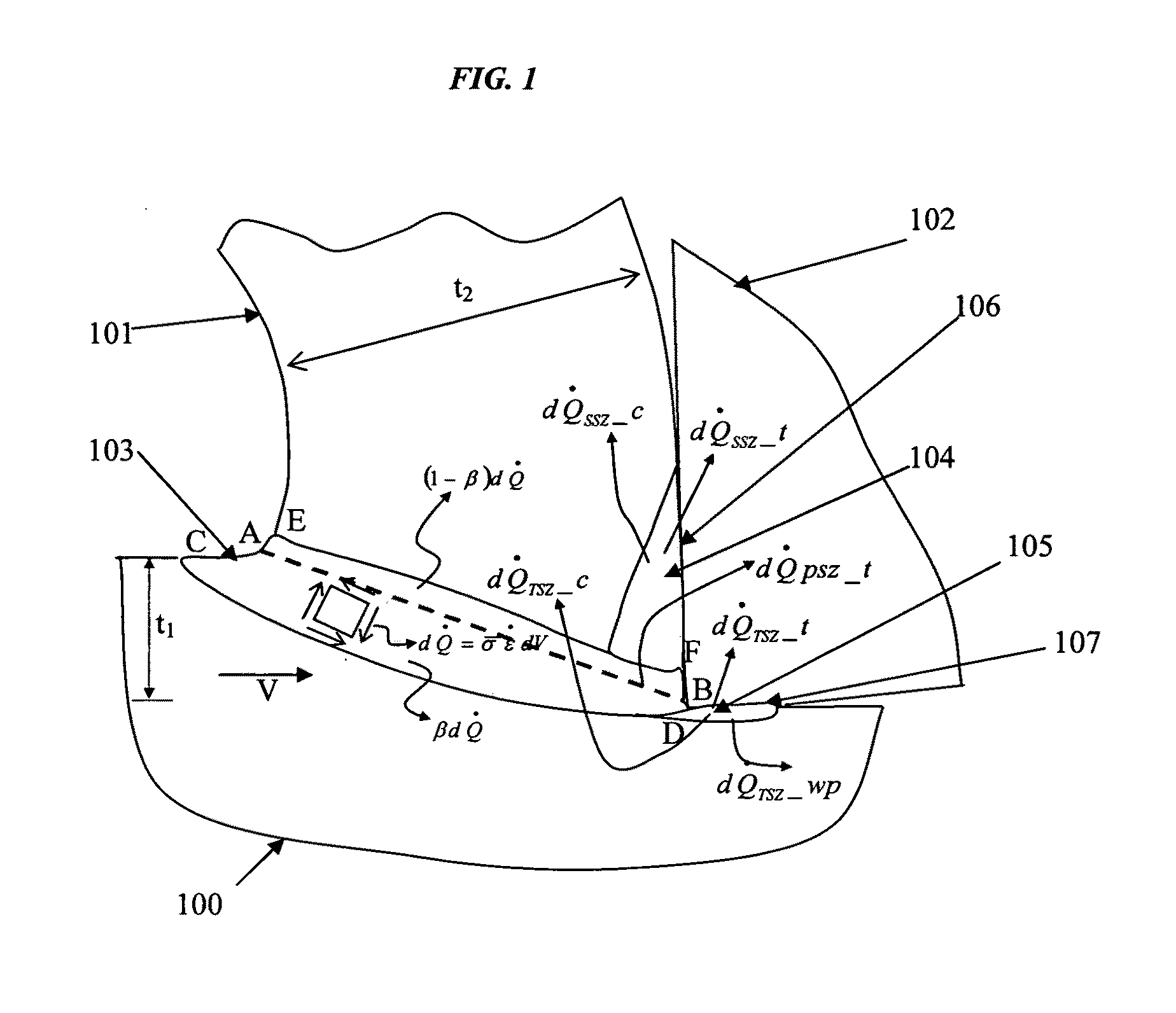Thermal modeling of an orthogonal machining process
a technology of thermomechanical analysis and orthogonal machining, applied in the direction of analogue processes, cad techniques, instruments, etc., can solve the problems of not reaching steady state for reasonable termination times, computationally expensive, and inability to obtain steady state temperature distribution, etc., to achieve specific heat of the tool, reduce the effect of thermal inertia per unit volum
- Summary
- Abstract
- Description
- Claims
- Application Information
AI Technical Summary
Benefits of technology
Problems solved by technology
Method used
Image
Examples
Embodiment Construction
[0032]In the following we illustrate the invention using machining (also known as cutting) as a specific embodiment of the way in which the invention may be practiced. This embodiment is described in sufficient detail to enable those skilled in the art to practice the invention. It is to be understood that other embodiments may be utilized and that structural, logical and practical changes may be made without departing from the scope of the present invention. The scope of the present invention is defined by the appended claims and therefore the following description of example embodiments should not to be taken in a limited sense.
[0033]The present subject matter concerns the thermal modeling of a metal cutting process. Various embodiments model the thermal properties of a tool for machining. The present subject matter extends to metallic tools, as well as those that are not. Further, the present subject matter extends to workpieces that are metallic, as well as those that are not.
[0...
PUM
 Login to View More
Login to View More Abstract
Description
Claims
Application Information
 Login to View More
Login to View More - R&D
- Intellectual Property
- Life Sciences
- Materials
- Tech Scout
- Unparalleled Data Quality
- Higher Quality Content
- 60% Fewer Hallucinations
Browse by: Latest US Patents, China's latest patents, Technical Efficacy Thesaurus, Application Domain, Technology Topic, Popular Technical Reports.
© 2025 PatSnap. All rights reserved.Legal|Privacy policy|Modern Slavery Act Transparency Statement|Sitemap|About US| Contact US: help@patsnap.com



